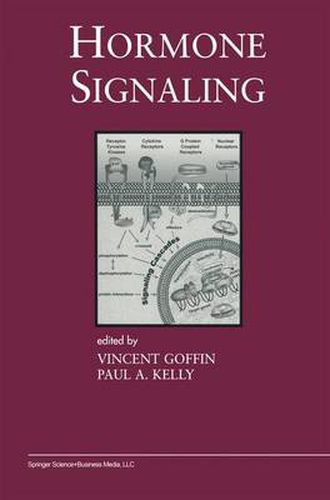Readings Newsletter
Become a Readings Member to make your shopping experience even easier.
Sign in or sign up for free!
You’re not far away from qualifying for FREE standard shipping within Australia
You’ve qualified for FREE standard shipping within Australia
The cart is loading…






Multicellular organisms require a means of intracellular communication to organize and develop the complex body plan that occurs during embryogenesis and then for cell and organ systems to access and respond to an ever changing environmental milieu. Mediators of this constant exchange of information are growth factors, neurotransmmitters, peptide and protein hormones which bind to cell surface receptors and transduce their signals from the extracellular space to the intracellular compartment. Via multiple signaling pathways, receptors of this general class affect growth, development and differentiation. Smaller hydrophobic signaling molecules, such as steroids and non-steroid hormones, vitamins and metabolic mediators interact with a large family of nuclear receptors. These receptors function as transcription factors affecting gene expression, to regulate the multiple aspects of animal and human physiology, including development, reproduction and homeostasis. The aim of this book is to cover various aspects of intracellular signaling involving hormone receptors.
$9.00 standard shipping within Australia
FREE standard shipping within Australia for orders over $100.00
Express & International shipping calculated at checkout
Multicellular organisms require a means of intracellular communication to organize and develop the complex body plan that occurs during embryogenesis and then for cell and organ systems to access and respond to an ever changing environmental milieu. Mediators of this constant exchange of information are growth factors, neurotransmmitters, peptide and protein hormones which bind to cell surface receptors and transduce their signals from the extracellular space to the intracellular compartment. Via multiple signaling pathways, receptors of this general class affect growth, development and differentiation. Smaller hydrophobic signaling molecules, such as steroids and non-steroid hormones, vitamins and metabolic mediators interact with a large family of nuclear receptors. These receptors function as transcription factors affecting gene expression, to regulate the multiple aspects of animal and human physiology, including development, reproduction and homeostasis. The aim of this book is to cover various aspects of intracellular signaling involving hormone receptors.